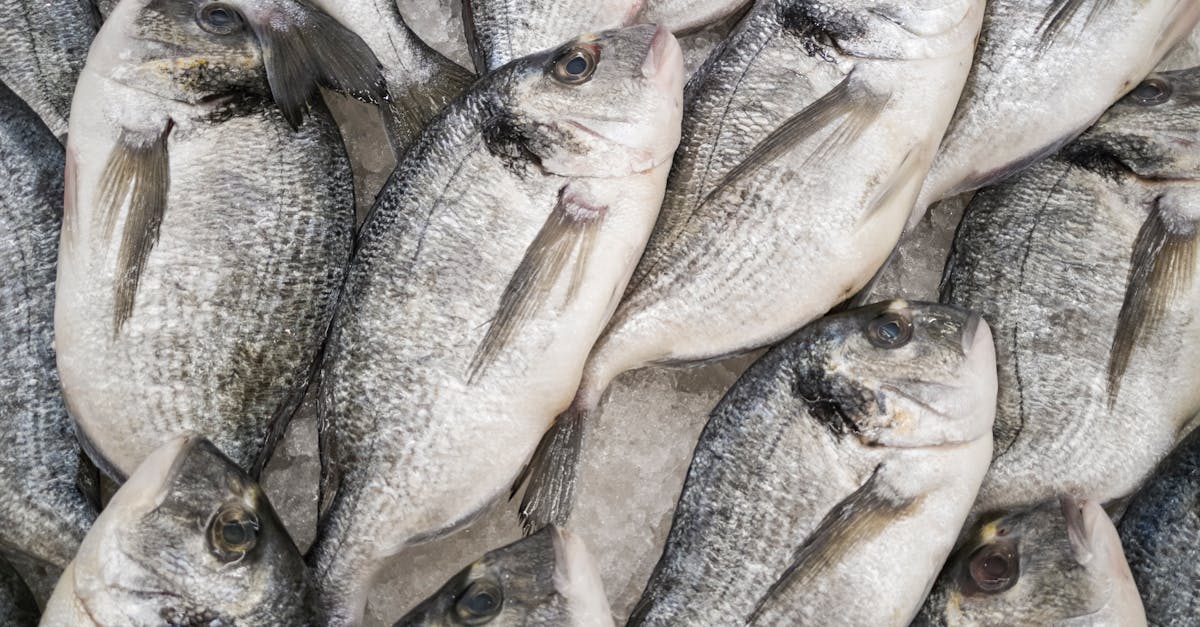What are the Health Benefits of Low Histamine Fish

Role in Digestive Health
A diet low in histamine can significantly benefit digestive health. Many individuals experience sensitivity to histamines, which can lead to symptoms such as bloating and discomfort. Low histamine fish, being fresh and minimally processed, generally poses a lower risk of triggering these reactions. The ease of digestion associated with these fish reduces the likelihood of gastrointestinal distress. This makes them a suitable option for those looking to support their digestive system.
Incorporating low histamine fish into meals can enhance nutrient absorption. Rich in omega-3 fatty acids, these fish support gut health while providing essential nutrients. Their beneficial fats may also help reduce inflammation in the gut lining, promoting a healthier digestive environment. This combination of factors promotes overall digestive wellness, allowing the body to assimilate nutrients more effectively and maintain balanced gut flora.
Ease of Digestion and Nutrient Absorption
Low histamine fish are generally considered easier to digest compared to other protein sources. Their structure allows for efficient enzymatic breakdown, which facilitates smoother digestion. This attribute is particularly beneficial for individuals with sensitive digestive systems or those who suffer from conditions such as irritable bowel syndrome. As a result, consuming low histamine fish can lead to reduced bloating and discomfort after meals.
These fish varieties are not only easier to digests but also serve as a rich source of essential nutrients. The bioavailability of proteins and other nutrients found in these fish contributes to improved absorption in the gastrointestinal tract. Vitamins, such as B12 and omega-3 fatty acids, play significant roles in various bodily functions, enhancing overall health. Consequently, incorporating low histamine fish into the diet supports both digestive health and nutrient uptake.
Source of Lean Protein
Fish is recognised as an excellent source of lean protein, which is essential for overall health. This type of protein is low in fat and high in essential amino acids necessary for muscle repair and growth. Incorporating low histamine fish into one’s diet can provide a high-quality protein source without the accompanying heaviness often found in fatty meats.
Furthermore, lean protein plays a significant role in maintaining a healthy weight. It requires more energy for digestion, thereby boosting metabolism and promoting satiety. This balance helps individuals feel fuller for longer, reducing the tendency to snack on less healthy options. Thus, low histamine fish can be a smart addition for those looking to manage their weight while still meeting their protein needs.
Advantages for Weight Management
Low histamine fish are an excellent choice for those aiming to manage their weight. They are typically low in calories while providing high-quality protein, which helps to promote satiety. By including these fish in a balanced diet, individuals can regulate their appetite and reduce the likelihood of overeating, making it easier to maintain or lose weight.
Moreover, the protein contained in low histamine fish aids in muscle preservation during weight loss. High-protein diets can increase metabolic rates, helping the body burn more calories throughout the day. Incorporating these fish into regular meals can support long-term weight management goals without compromising nutritional value or enjoyment.
Enhancing Brain Function
Fish is often celebrated for its rich content of omega-3 fatty acids, which are crucial for maintaining optimal brain health. These healthy fats contribute significantly to the structure of brain cells and support cognitive function. Regular consumption may lead to improved memory and enhanced overall cognitive performance, benefiting individuals across various age groups.
Additionally, fish provides essential nutrients such as vitamin D and selenium, both of which have been associated with reduced risk of cognitive decline. Vitamin D plays a role in the growth and repair of brain cells, while selenium contributes to antioxidative processes that protect the brain from oxidative stress. Including low histamine fish in one's diet can therefore not only promote brain health but also support mental clarity and overall cognitive endurance.
Nutritional Elements Promoting Cognitive Health
Low histamine fish provide essential nutrients that play a crucial role in supporting brain function. Omega-3 fatty acids found in these fish are well-known for their anti-inflammatory properties. They contribute to the maintenance of neuronal health and are associated with a lowered risk of cognitive decline. These fats are vital for building brain cell membranes and ensuring effective communication between neurons, which enhances overall cognitive performance.
In addition to omega-3s, low histamine fish are rich in vitamins such as B12 and D. Vitamin B12 is essential for the production of neurotransmitters and is linked to mood regulation. Similarly, vitamin D is associated with cognitive function and may help protect against brain ageing. Together, these nutritional components create a supportive environment for optimal brain function and overall mental health.
FAQS
What is low histamine fish?
Low histamine fish refers to fish that are less likely to produce histamine during storage and processing, making them safer for individuals with histamine intolerance.
How does low histamine fish aid in digestive health?
Low histamine fish is easier to digest and promotes better nutrient absorption, which can lead to improved digestive health.
Can low histamine fish help with weight management?
Yes, low histamine fish is a source of lean protein, which can help manage weight by promoting fullness and supporting muscle maintenance.
What nutritional elements in low histamine fish enhance brain function?
Low histamine fish contains essential omega-3 fatty acids, vitamins, and minerals that support cognitive health and overall brain function.
Is low histamine fish suitable for everyone?
While low histamine fish is beneficial for many, individuals with specific dietary restrictions or allergies should consult a healthcare professional before including it in their diet.
Related Links
What to Look for When Choosing Low Histamine FishHow to Identify Low Histamine Fish Options